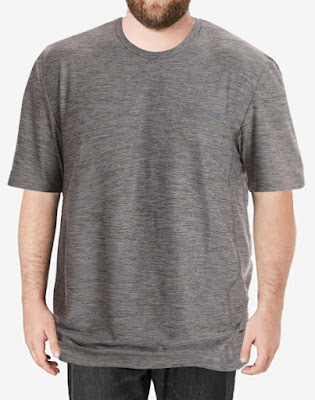The Polo Shirt: A History of Sport and Style
The polo shirt, with its timeless design and versatile appeal, has become a wardrobe staple for men and women alike, transcending its origins as sportswear to become a symbol of casual elegance and sophistication. In this article, we will explore the rich history of the polo shirt, tracing its evolution from the polo fields of the 19th century to the runways of high fashion. Through a series of bullet points, we will delve into the origins, design features, cultural significance, and enduring popularity of the polo shirt, shedding light on its remarkable journey through time.
- Origins of the Polo Shirt:
- The polo shirt traces its origins to the sport of polo, which originated in ancient Persia and gained popularity in British India during the 19th century.
- The earliest polo shirts were long-sleeved, button-up garments made of thick cotton or wool, designed to withstand the rigors of the polo field.
- In the late 19th century, British polo players began wearing short-sleeved, button-down shirts with a soft collar and placket, providing greater comfort and mobility during matches.
- Introduction of the Tennis Shirt:
- The polo shirt gained widespread recognition when French tennis champion René Lacoste introduced a similar design for tennis players in the 1920s.
- Lacoste's "tennis shirt," as it was initially called, featured a piqué cotton fabric, short sleeves, a ribbed collar, and a buttoned placket, distinguishing it from traditional tennis attire.
- The lightweight and breathable fabric of the tennis shirt made it well-suited for athletic pursuits, offering players comfort and ease of movement on the tennis court.
- Popularization and Commercialization:
- René Lacoste's tennis shirt revolutionized athletic apparel, quickly gaining popularity among tennis players and spectators alike.
- In 1933, Lacoste founded La Chemise Lacoste to manufacture and distribute his signature tennis shirts, featuring the iconic crocodile logo embroidered on the chest.
- The polo shirt's association with sports and leisure activities contributed to its widespread adoption as casual wear, transcending its original function as athletic apparel.
- Polo Shirt in Fashion:
- The polo shirt's transition from sportswear to fashion staple gained momentum in the mid-20th century, fueled by its association with leisure activities and the rise of casual dressing.
- Fashion designers and clothing brands began incorporating polo shirts into their collections, offering a range of styles, colors, and fabrications to suit diverse tastes and preferences.
- The polo shirt's versatility and timeless appeal made it a favorite among celebrities, style icons, and fashion-conscious consumers seeking a balance of comfort and sophistication.
- Iconic Design Features:
- The classic polo shirt is characterized by several distinctive design features, including a soft collar, short sleeves, a buttoned placket, and a ribbed hem.
- Piqué cotton fabric, known for its textured weave and breathable properties, remains the preferred choice for polo shirt construction, although alternative materials such as jersey knit and performance fabrics are also used.
- The polo shirt's collar, often ribbed or flat-knit, can be worn popped up for a preppy look or folded down for a more understated appearance, adding versatility to its styling options.
- Cultural Significance:
- The polo shirt's association with sports, leisure, and luxury has contributed to its enduring cultural significance as a symbol of affluence, athleticism, and refined taste.
- From the tennis courts of Wimbledon to the fairways of golf courses, the polo shirt has become synonymous with outdoor recreation and upscale leisure pursuits.
- Its presence in popular culture, from film and television to advertising and literature, has further cemented the polo shirt's status as an emblem of sport and style.
- Contemporary Trends and Innovations:
- In recent years, the polo shirt has undergone various reinterpretations and updates to keep pace with changing fashion trends and consumer preferences.
- Designers have experimented with new silhouettes, embellishments, and fabrications to give the classic polo shirt a modern twist, catering to a younger demographic and expanding its appeal.
- Collaborations between fashion brands and athletes, celebrities, or artists have also breathed new life into the polo shirt, introducing limited-edition collections and exclusive designs that capture the zeitgeist of contemporary culture.
Conclusion:
- The polo shirt's journey from the polo fields of the 19th century to the fashion runways of today is a testament to its enduring appeal and versatility.
- As a symbol of sport and style, the polo shirt continues to evolve and adapt to changing fashion trends and cultural influences, while remaining true to its timeless design and heritage.
- Whether worn on the tennis court, golf course, or city streets, the polo shirt remains a wardrobe essential for men and women seeking comfort, sophistication, and effortless style.






No comments